A cardigan will help to add femininity or style to the chosen image. The charming Coco Chanel borrowed this versatile piece of clothing, along with trousers, from the wardrobe of a strong half of humanity, making these typically masculine items unisex. The cardigan will complement the classic wardrobe, organically fit into the casual style, and young people manage to combine this wardrobe item even with sneakers. At the height of fashion in 2020, lalo styles (to mid-thigh), as well as elongated (below mid-thigh) and long (to the ankles).
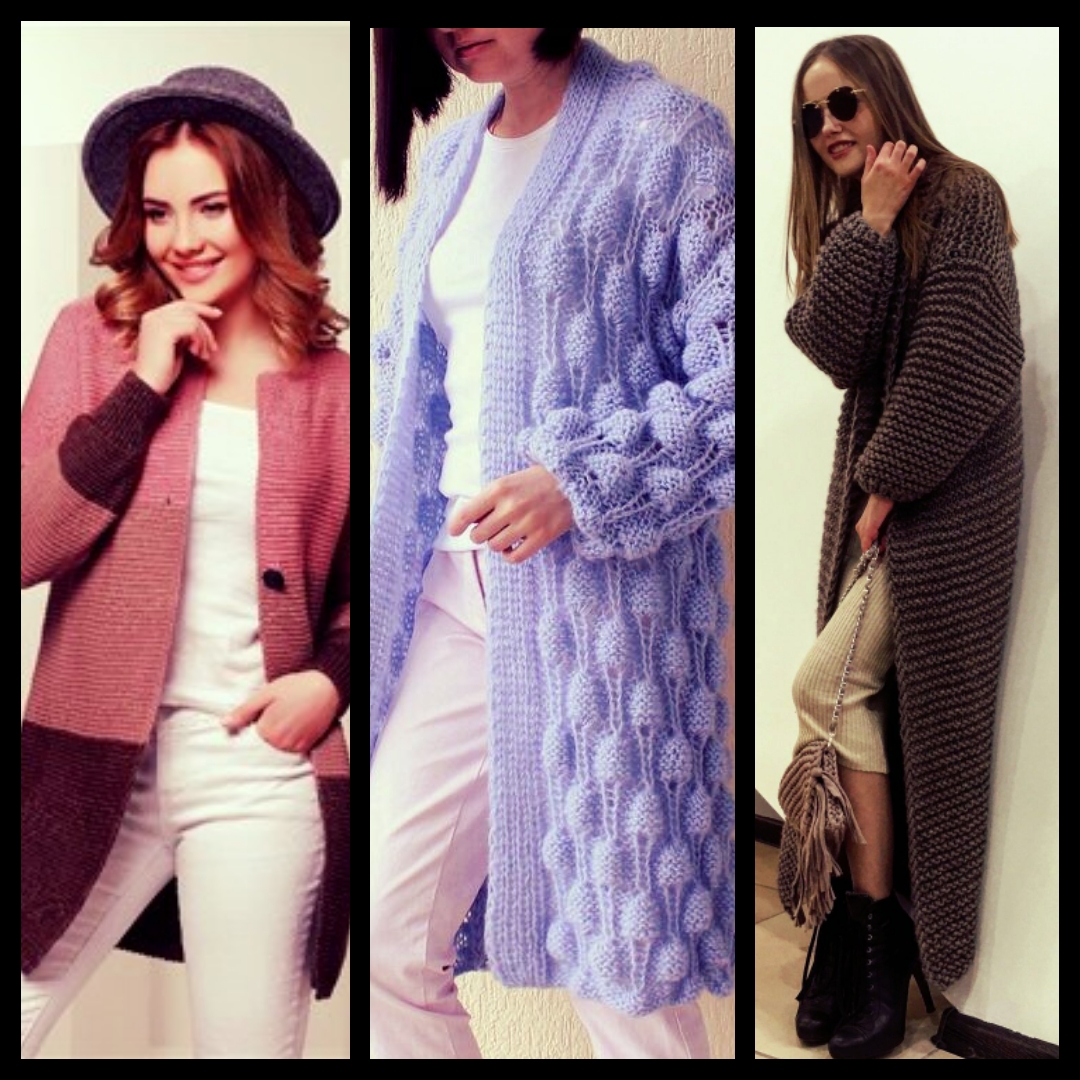
Content
Cardigan: buy or knit?
The popularity of these models is rapidly gaining momentum, and, according to fashion experts, will capture not only 2020, but also 2020. Cropped models are out of fashion trends. The two-piece models have not lost their relevance either - a cardigan complete with a thinner jacket of the same pattern and texture.
The main criteria for choosing a style:
- Functional - a cardigan can serve as a decorative addition to the image, or as an independent thing - warm, warming and stylish at the same time;
- Shape type. It is better for ladies with a magnificent physique to refrain from voluminous models knitted from thick threads - it is better to prefer a lalo style made of thin yarn with buttons or strings to visually emphasize the waist. Any cardigans are suitable for thin and graceful girls: knitted, knitted, voluminous or tight-fitting.
Many are confused, not understanding how the cardigan differs, for example, from a jacket, or from the same jacket. In short:
- Has no collar and lapels, at least - in their generally accepted shape;
- Longer sweatshirts: popular models are from mid-thigh to below.
- It is made of soft fabric that does not keep its shape: jersey, yarn, etc. It seems to embrace the figure, flowing along it with soft folds;
- Can be either long or short sleeves;
- Unlike a sweater or jacket, it may not have a belt, no ties, or buttons.
The second question: how to choose a cardigan so that it becomes a favorite part of the wardrobe, and not a burden shifted from shelf to shelf according to the principle: "It's a pity to throw it away, I don't want to wear it"? You can buy the thing you like in the store, or you can save a lot and knit it yourself. The advantages of the latter option:
- Save money - good yarn will cost you almost 2-3 times less than a store-bought mid-quality cardigan. For example: making a model 42-44 size will require from 600 to 900 g of melange threads (80% acrylic + 20% wool) - depending on the length of the product, knitting density and the complexity of the pattern. One skein will cost 106 rubles, the total amount of yarn - from 800 to 1000 rudders.
- Satisfaction with the creative process - you can independently develop the design and color scheme.
- Hand made is always in fashion - such a thing will be trendy even after several years, thanks to its own uniqueness. Buying such a piece thing will cost a tidy sum. So why not try tying it yourself?
The table clearly shows the difference in price between a self-related product and a store-bought item. There is no need to explain how much a high-quality and fashionable thing costs - the average price will clearly exceed 5,000 rubles, which not every fashionista can afford.Budget models from the mass market rarely meet all the expectations of customers - with all the abundance, it is quite difficult to choose a product that matches the color and style.
The comparison is based on the model of the Glenfield brand, its basis is an ordinary square. Material: 70% acrylic, 30% merino wool. The cost of the model is 6.500 rubles.
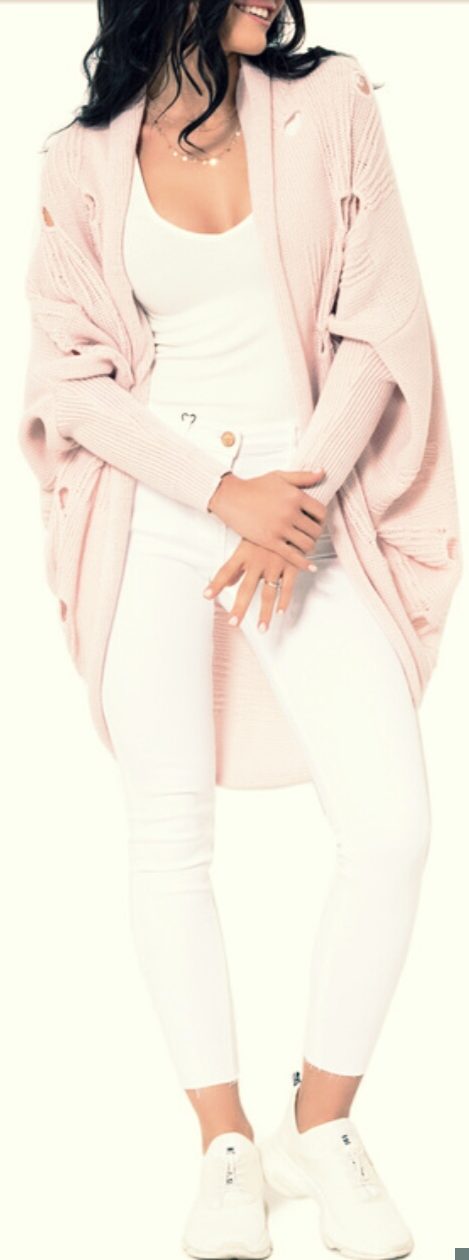
Meanwhile, even a novice needlewoman can knit such a model on her own, spending a little time.
| Yarn, composition | Weight / length | Price per skein | Required quantity per size (hook # 3 / needles # 3-4) * | |||
| 42-44 | 44-46 | 48-50 | 52-54 | |||
| Alize
(80% acrylic + 20% wool) |
100 g / 250 m | 110 | 10/13
|
13/15
|
15/16
|
16/18
|
| total amount | 1.100/1.430 | 1.430/1.650 | 1.650/1.760 | 1.760/1.980 | ||
| YarnArt
(70% cotton + 30% viscose) |
100g / 350 m | 170 | 11/13 | 13/15 | 15/17 | 17/18 |
| total amount | 1.870/2.210 | 2.210/2.550 | 2.550/2.890 | 2.890/3.060 | ||
* Calculation for standard length - up to mid-thigh.
Obviously, at the price, a handmade cardigan will cost less than a purchased one. The main drawback is that it will take a certain amount of time to implement the idea, especially if you do not have knitting skills. However, there are models, the independent production of which will require a little time and effort, and the finished product will be no worse than the one purchased in the store.
How to tie?
The prospect of knitting a new thing on their own frightens many fashionistas, who mistakenly believe that this is a difficult and long process. There is good news for them: some knitting options allow you to independently make a high-quality and beautiful thing that will look no worse than a machine-knitted product.
Hook
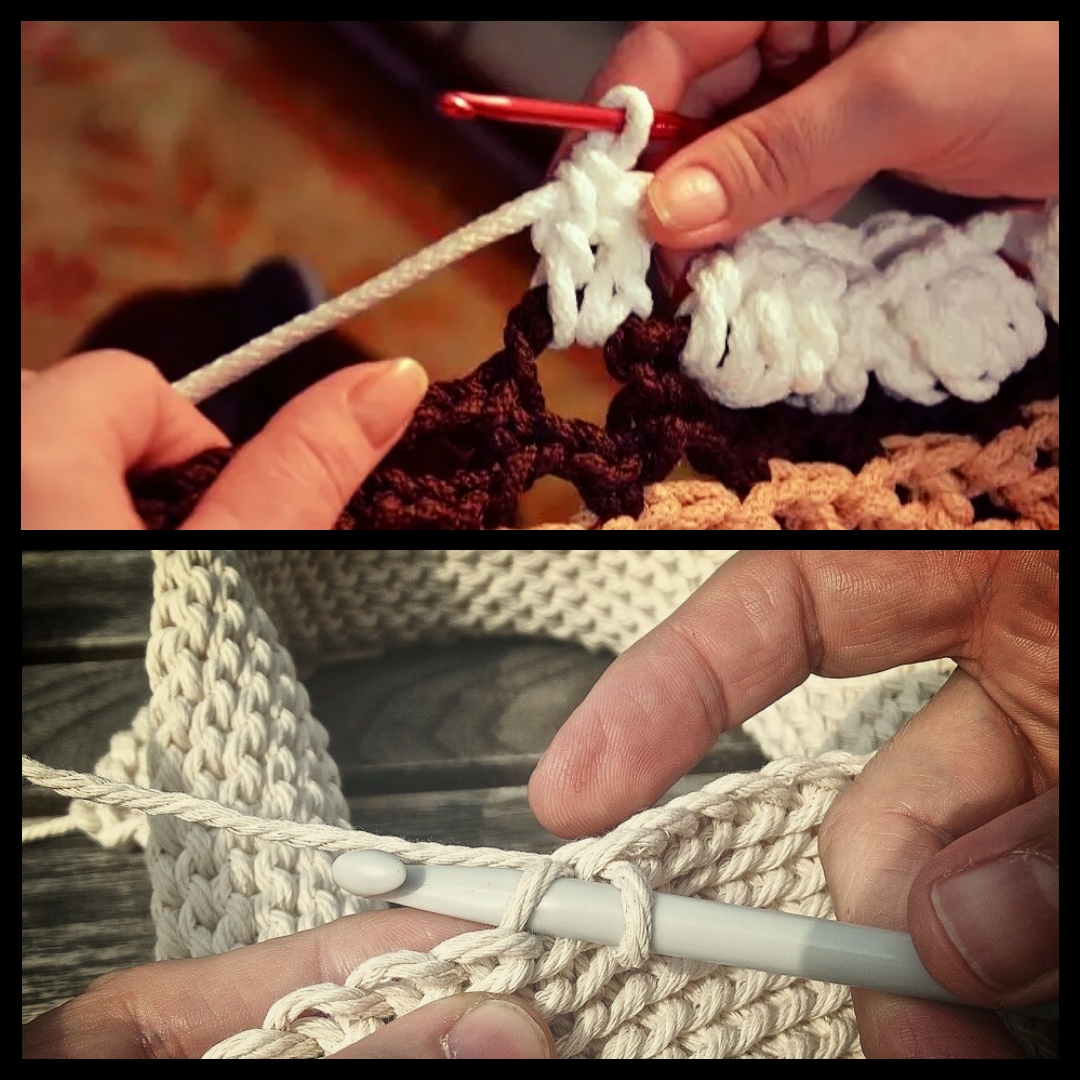
Contrary to popular belief, you can crochet not only light openwork napkins, but also full-fledged garments with high density. Volumetric patterns, including braids that are knitted with knitting needles, with a certain skill can be crocheted - the result will be no worse if you follow the scheme and carefully follow the pattern.
Base: square

This model is crocheted, consists of one large square, the corners of which are sewn together. You get a cardigan with a V-neck and short sleeves. Places of armholes and cutouts after sewing are tied in the technique of "English elastic" - and the product is ready. It can be additionally decorated with strings, a belt or buttons, trimmed with a print or applique.
Advantages:
- Ease of execution - even for a beginner;
- Can be worn without fasteners or ties - does not slip off the shoulders;
- The product turns out to be elegant and light.
Disadvantages:
- The optimal length of such a model is just below the middle of the thigh, if you knit longer, an ugly narrow "tail" is formed from two stitched lower corners.
Circle based model
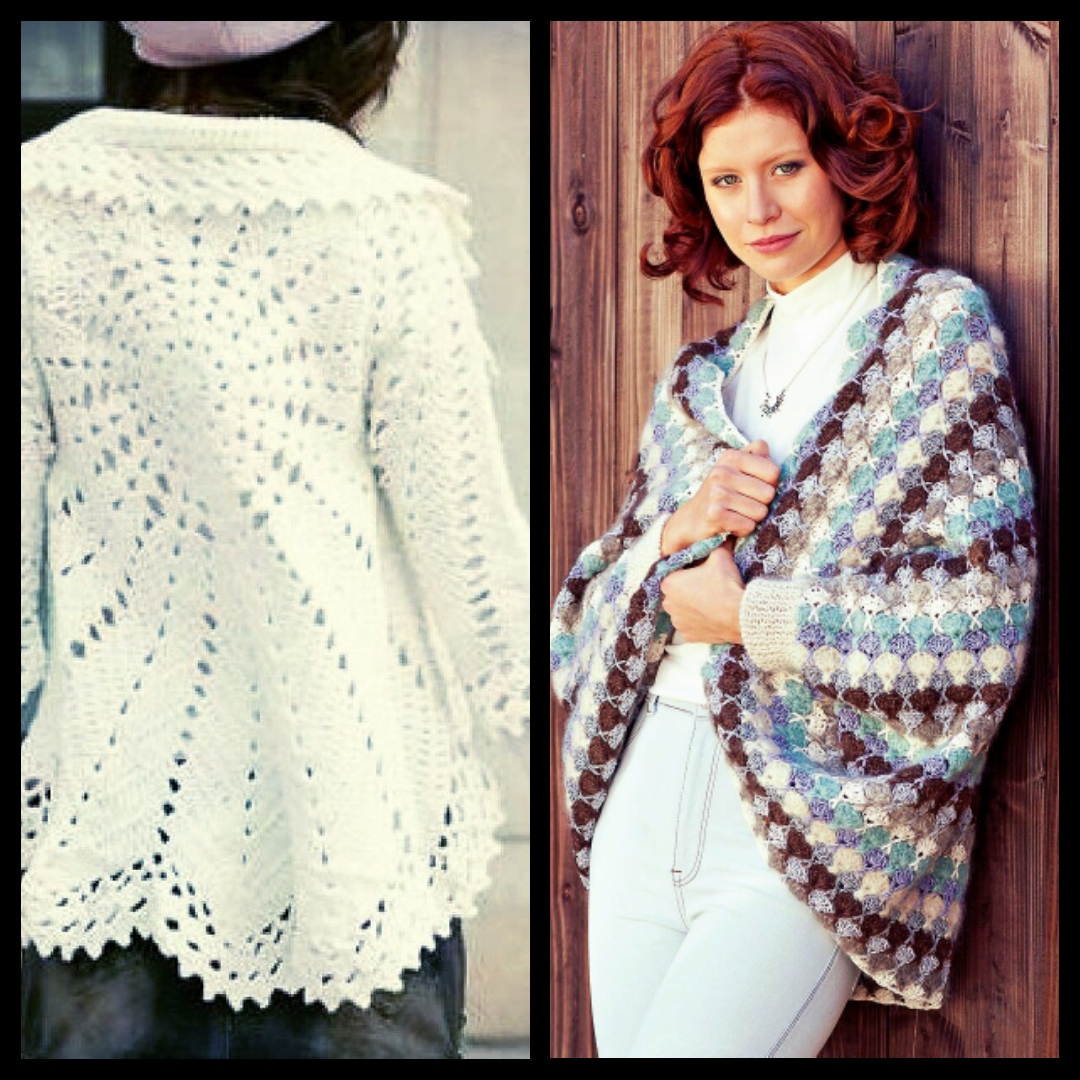
It also does not require serious skills - just learn the basics of crocheting and carefully count the loops. The product turns out to be feminine, it can be made zapashny, having achieved a fit on the figure, or looser, so that it drapes beautifully and looks light and flying. Armholes can be tied to create a product with long sleeves, ¾ or ⅞ - at the discretion of the craftswoman. A single-color version in combination with dense knitted single crochet or in the "Column with a crochet-single crochet" version will turn out to be soft and warm, the openwork version will add lightness and grace to the image, well complementing a classic pencil skirt or tight-fitting jeans. As ties, you can use satin ribbons of the appropriate shade or decorate the cardigan with one or two buttons of an unusual shape.
Advantages:
- Ease of implementation;
- The ability to control the fit along the silhouette.
Disadvantages:
- It must be remembered that you need to add loops with a slight offset, otherwise, instead of a circle, it is quite possible to get a polygon with clearly defined edges.
Model assembled from squares
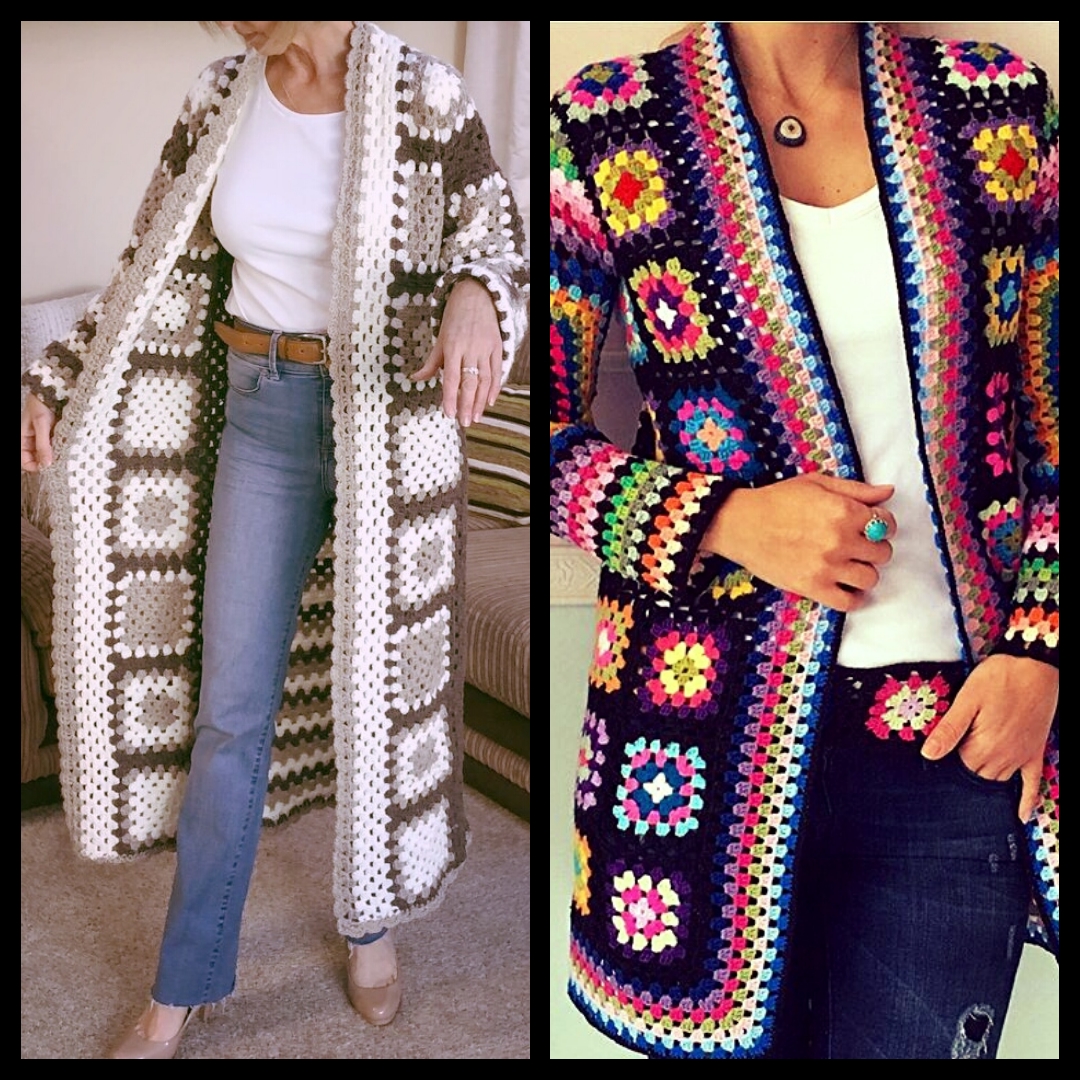
It is based on the same "Grandma's Square", connected with double crochets or, for density, single crochets. This option will require more time and experience: you need to not only tie, but also sew the fragments together according to the pattern. But the choice of style is significantly expanding. You can knit a cardigan of any length, even ankle length, with a zipper, hood, pockets or wide collar.No less popular are asymmetric models, which can also be linked from fragments.
Advantages:
- Variety of models.
Disadvantages:
- You need a minimum experience in knitting and assembling a product for a pattern.
Canvas
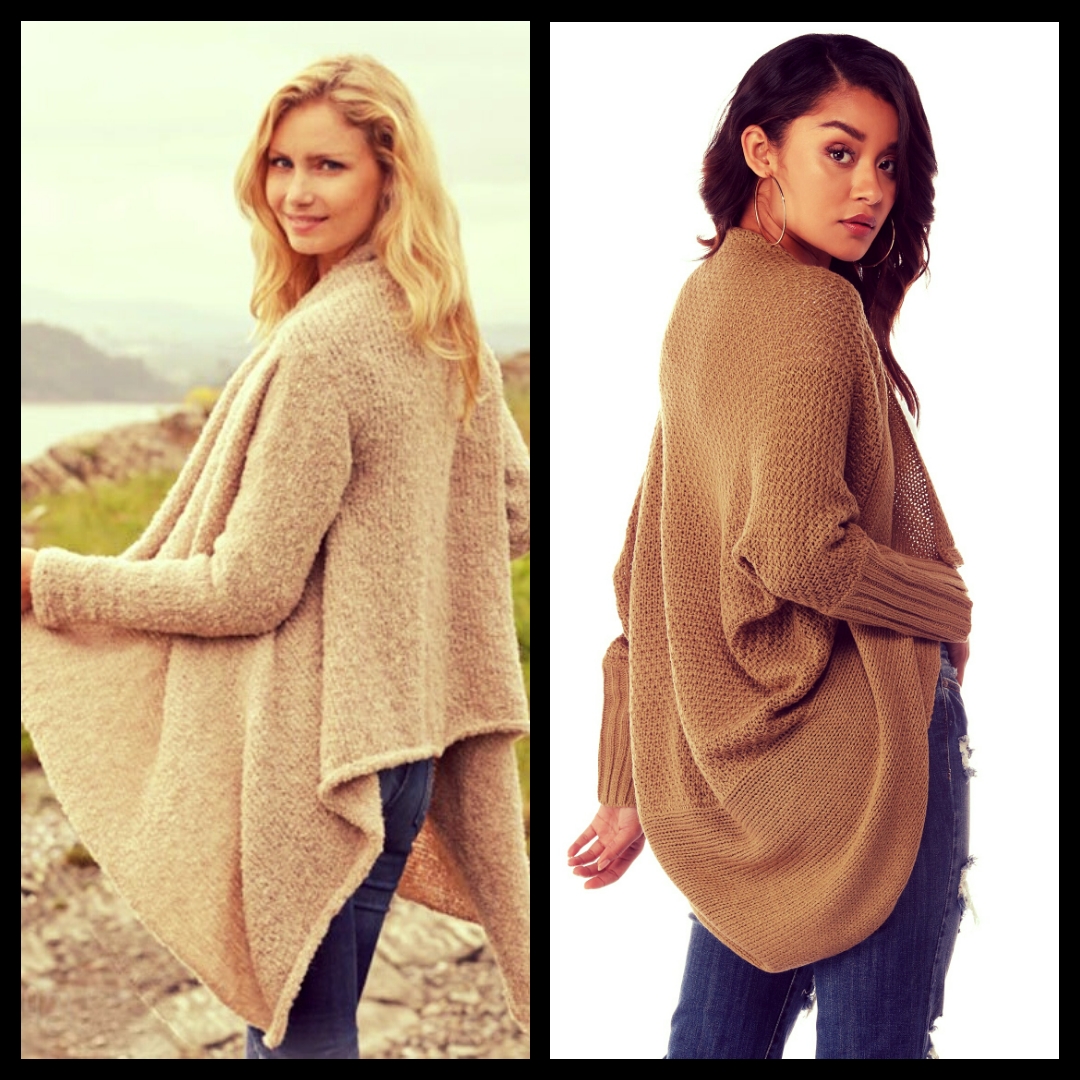
This option is also available in crochet design, although many people mistakenly believe that crochet is only knitting in a circle. The pattern can be anything: it is a classic "rhombus", "shell", "pineapple" or just a dense canvas of single crochet. A plaid cardigan will also look stylish.
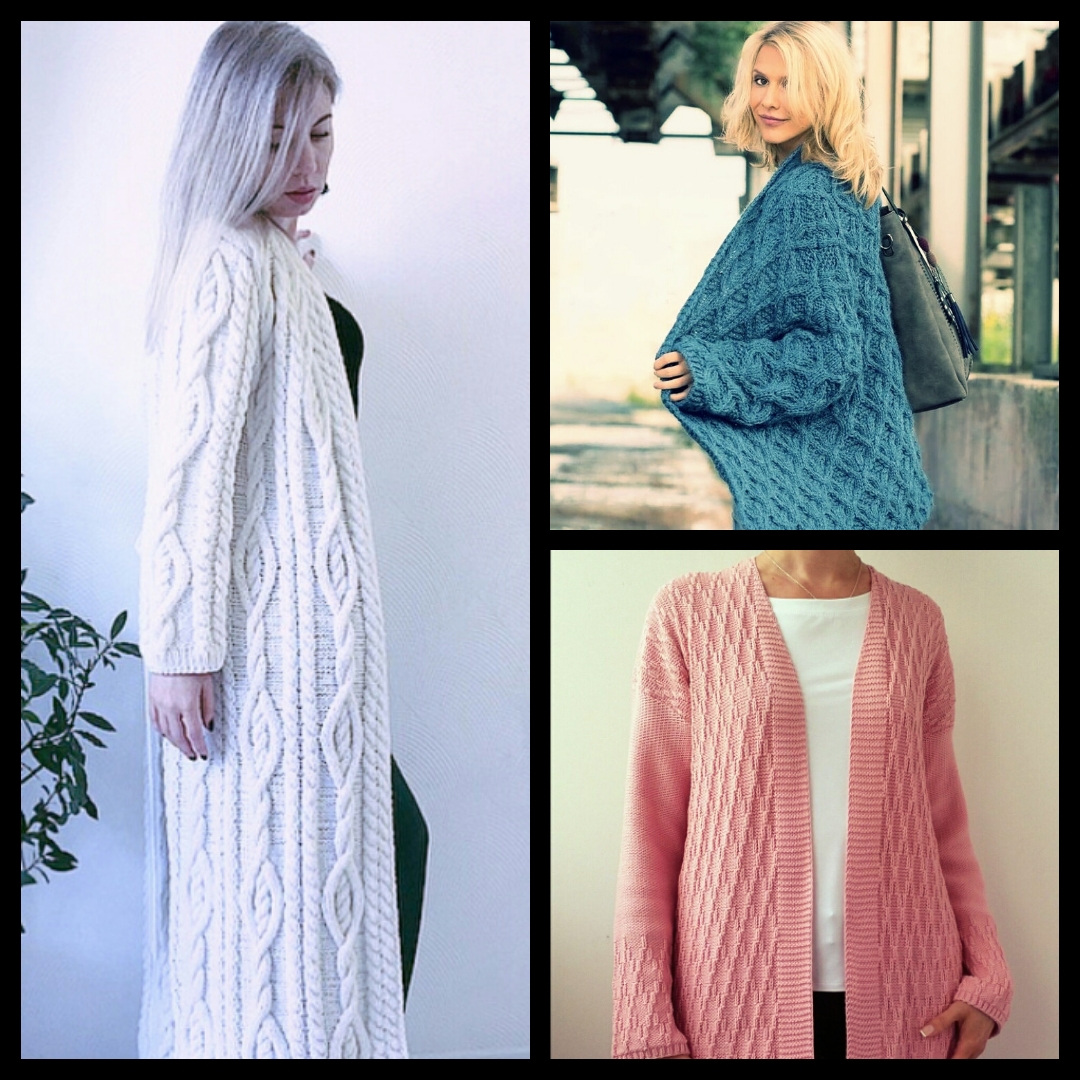
Advantages:
- Possibility to choose a model of any length and style.
Disadvantages:
- You need to choose in advance the pattern for knitting and assembling the product.
Crochet patterns for dense fabric:
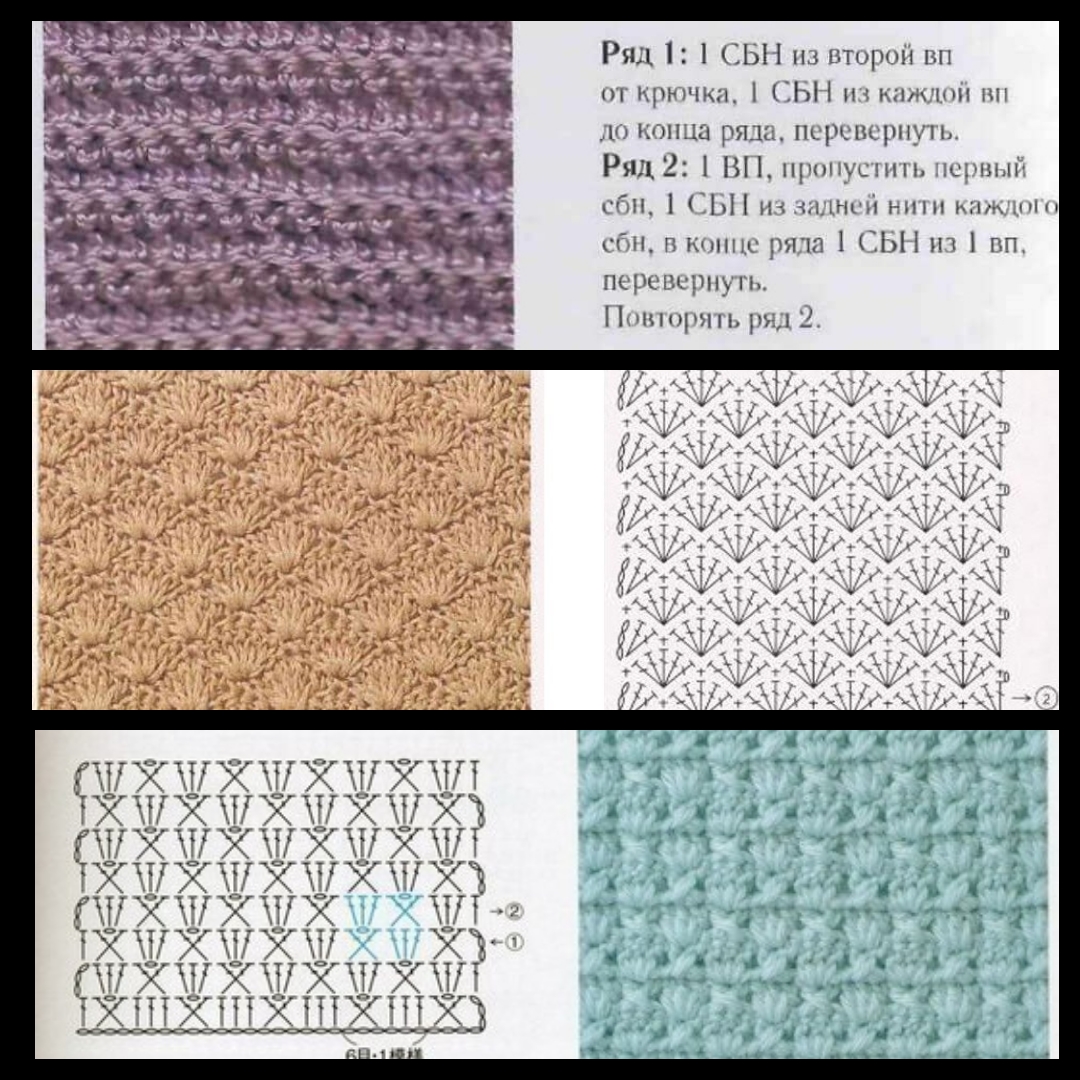
Crochet patterns for openwork fabric:
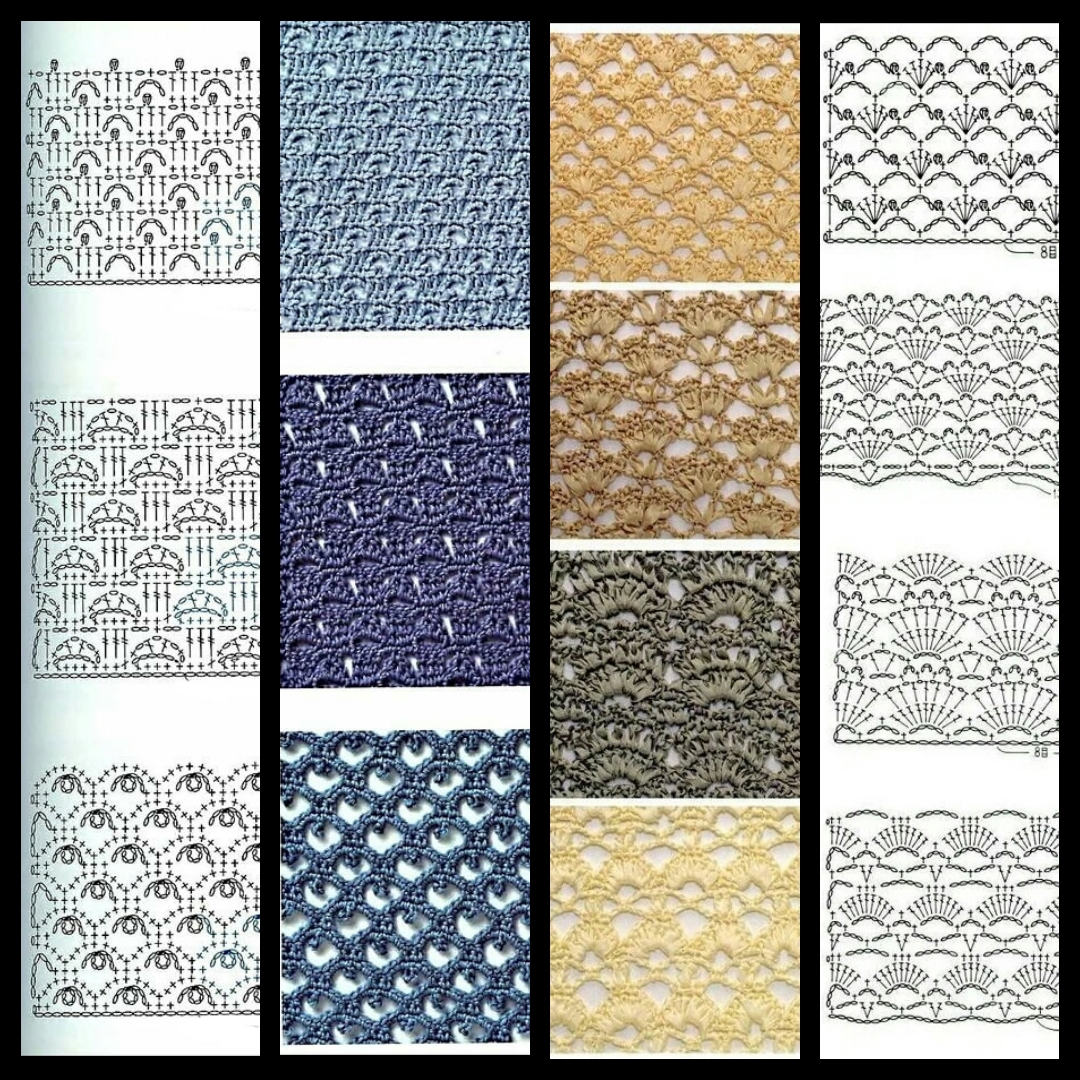
As you can see, there are many patterns for crocheting, it only depends on the individual choice whether the crocheted cardigan will be openwork and light, tight and tight-fitting to the figure, or voluminous and cozy.
Spokes
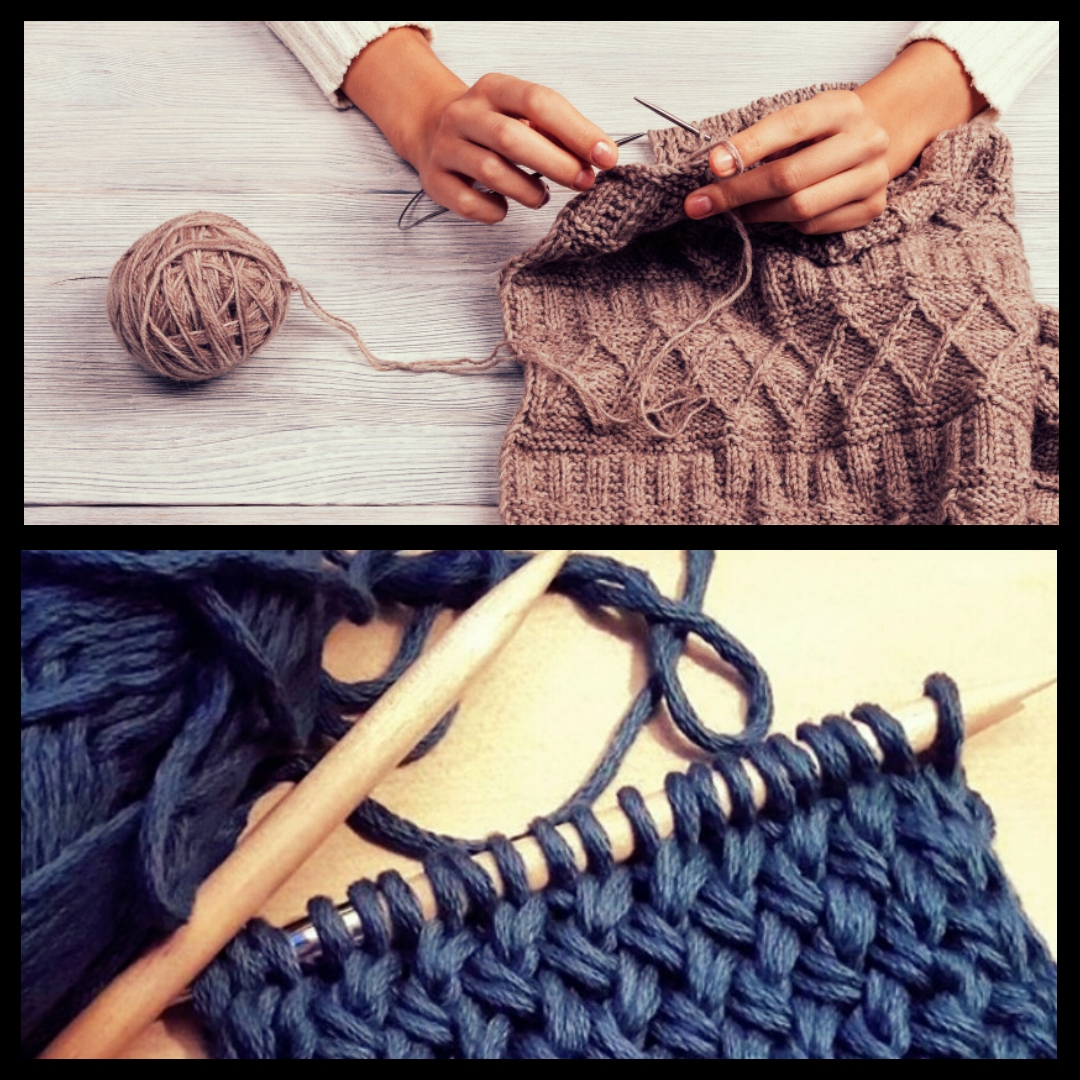
Unlike a crochet hook, knitting involves only making a cloth with the subsequent assembly of parts. Only a collar or yoke with a collar is knitted on circular knitting needles. Circular knitting needles are two ordinary knitting needles connected by an elastic cord, on which it is convenient to move knitted loops.
Recommendations of the craftswomen: elongated models of cardigans look interesting and stylish if they are connected in a thin transverse strip or with a gradient. The latter can be either smooth or contrasting.
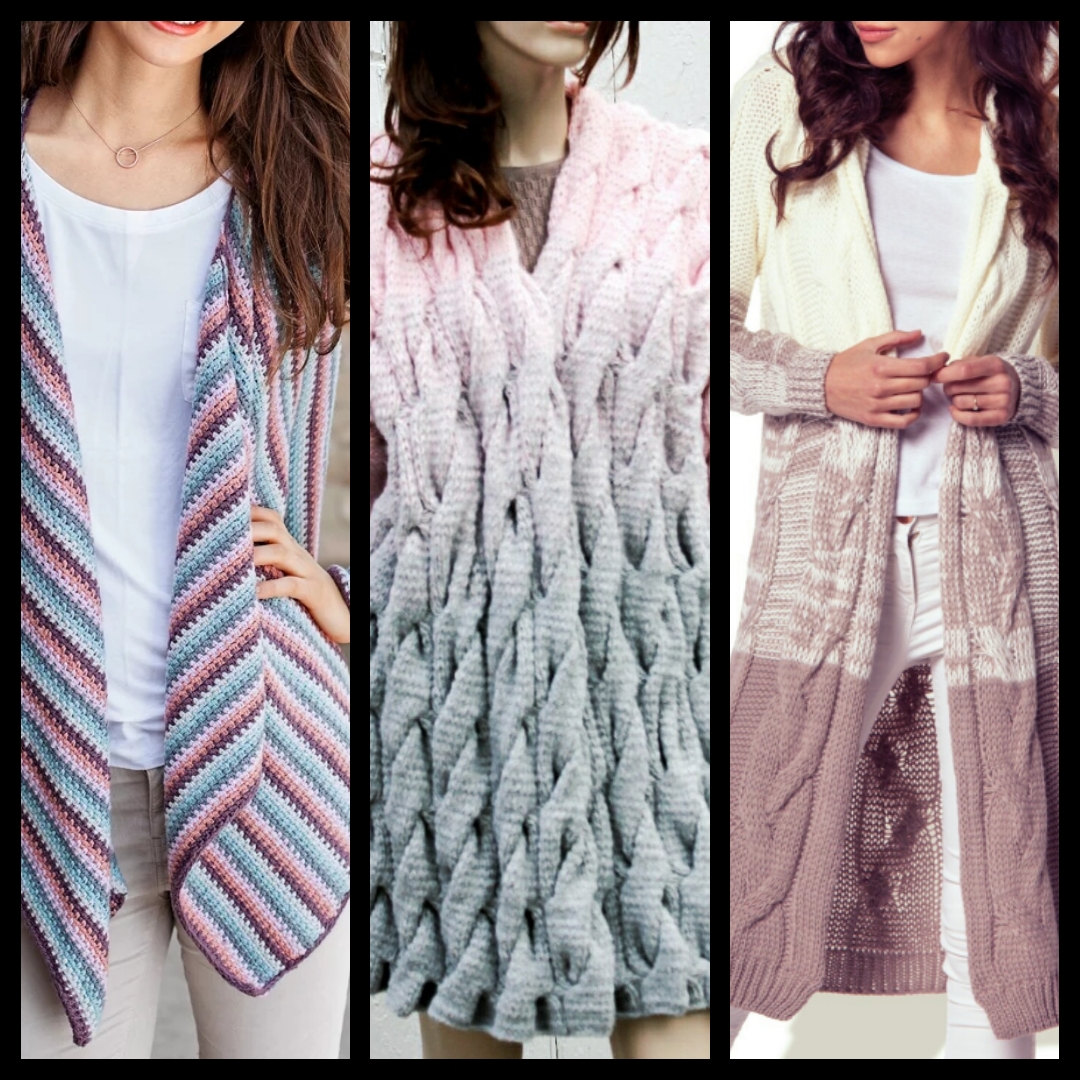
Recommendations of experienced needlewomen: if there is no knitting experience, it is better to prefer a standard and simple option - a row of purl loops, the next row - front loops. The canvas will look like this:
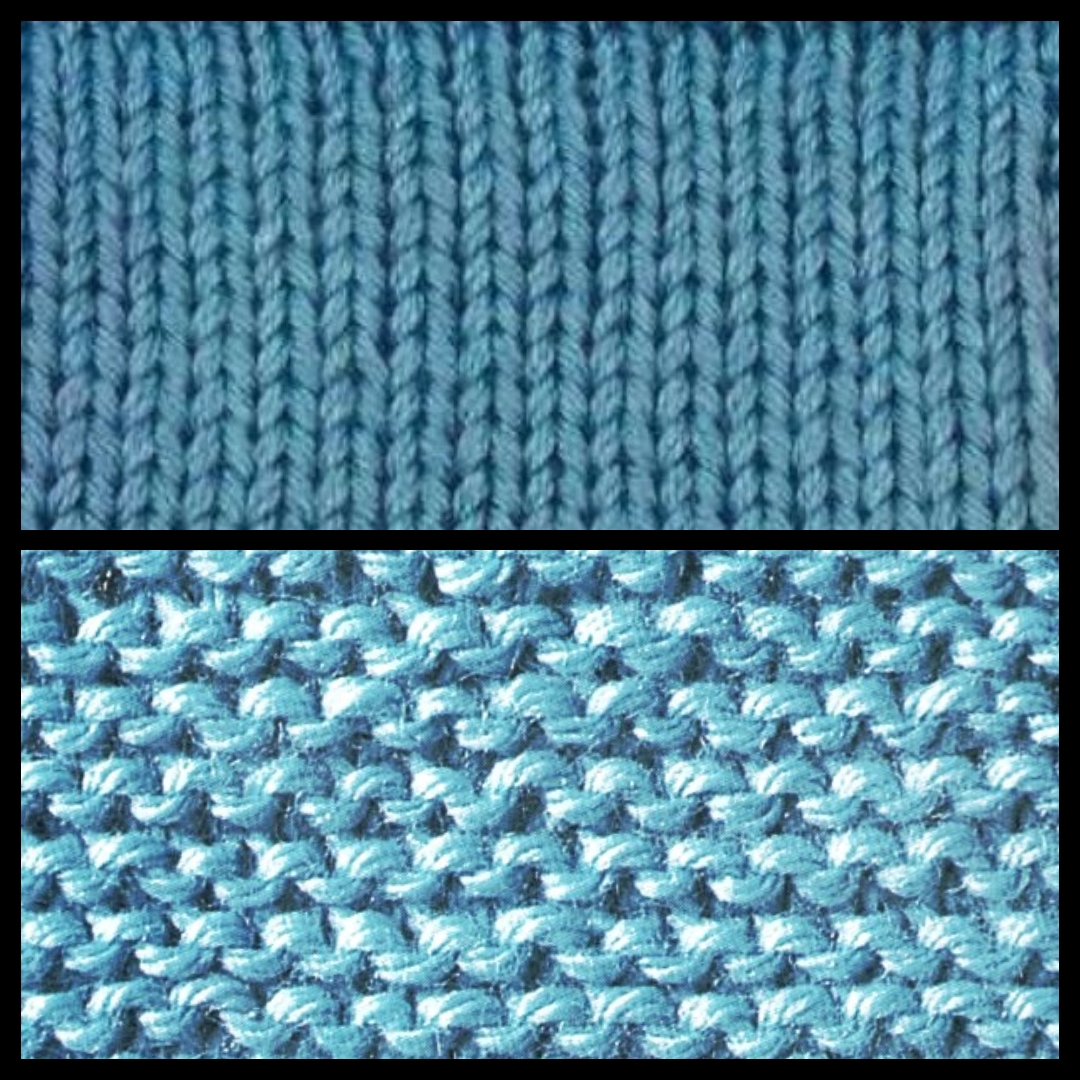
It is a good base for any applique print that can be neatly sewn onto a piece. In this case, you do not need to count the loops and follow the pattern, so knitting will not take much time, and the novice craftswoman will not have time to cool down to the process and shove the untied thing away. You can also knit only with front loops - this option is called shawl and turns out to be more voluminous. In this case, the canvas will look like this:
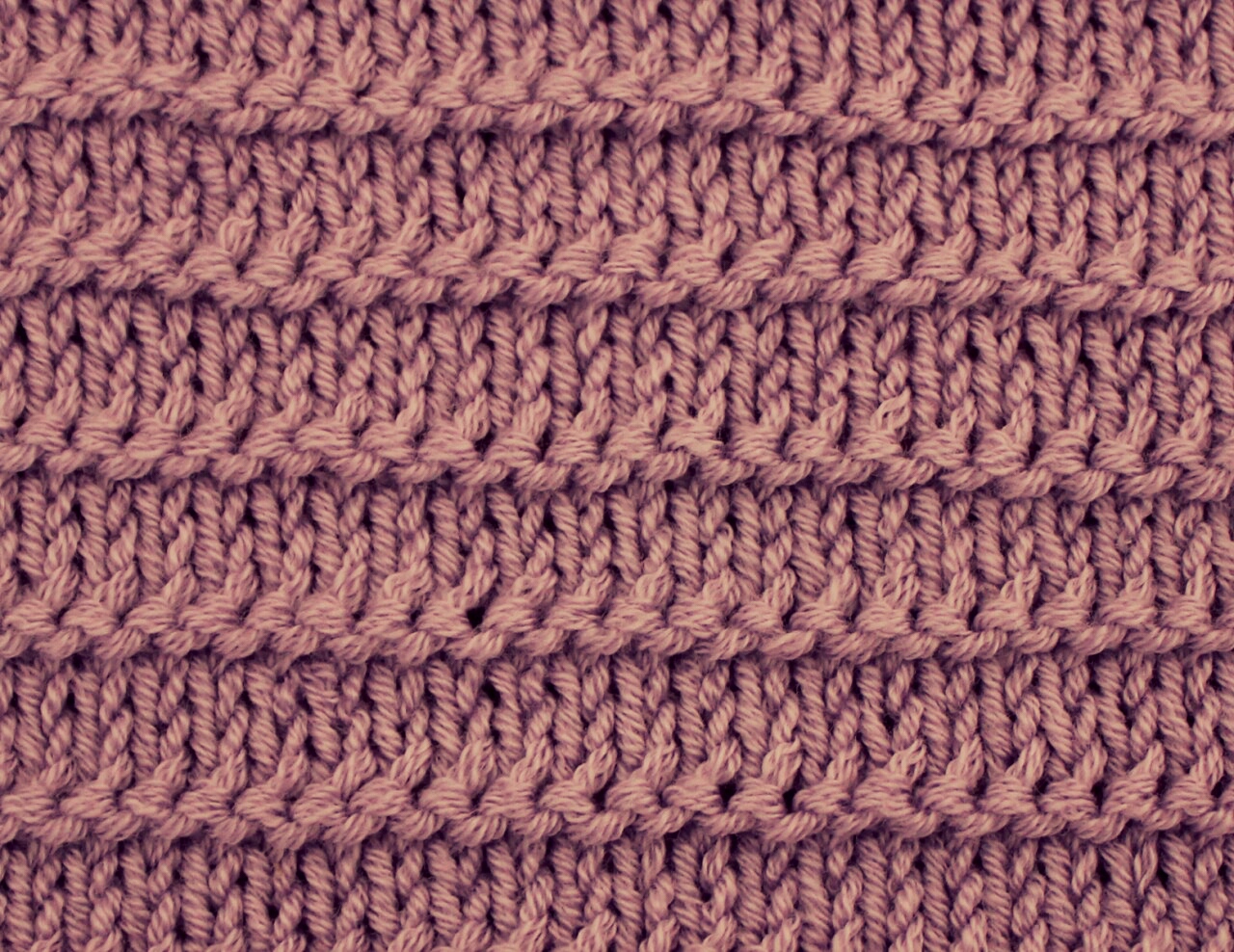
For knitting, you need to immediately choose a pattern, and also calculate the amount of yarn, taking into account your size and physique, and follow them - otherwise you can not guess with the size or knit the product out of shape.
How to choose yarn

The main mistakes when choosing threads are arrogance and the desire to immediately associate a thing with a beautiful and complex pattern. Novice craftswomen, having seen enough pictures with professionally knitted models, buy woolen or silk yarn, of course, spoil some part of it (which is inevitable in the absence of at least minimal experience), as a result, the process is either delayed due to the purchase of additional threads instead of spoiled ones, or thrown safely.
If knitting experience is not enough, it is better to take threads with a high content of acrylic, viscose and cotton in the composition (from 60 to 80%).
They are smoother, the fabric is easier to dissolve and tie in case of a mistake, which is especially valuable for those who are just learning to knit. Wool and angora in their pure form, when unfolding and bandaging, begin to "cash out", that is, smaller ones begin to knock out of the whole twisted thread, which ultimately will give the new, just knitted product an untidy look, as if it was worn carelessly and set a hook ... The following are the types of high-quality synthetic and natural yarn, from which even a novice needlewoman can knit.
Acrylic
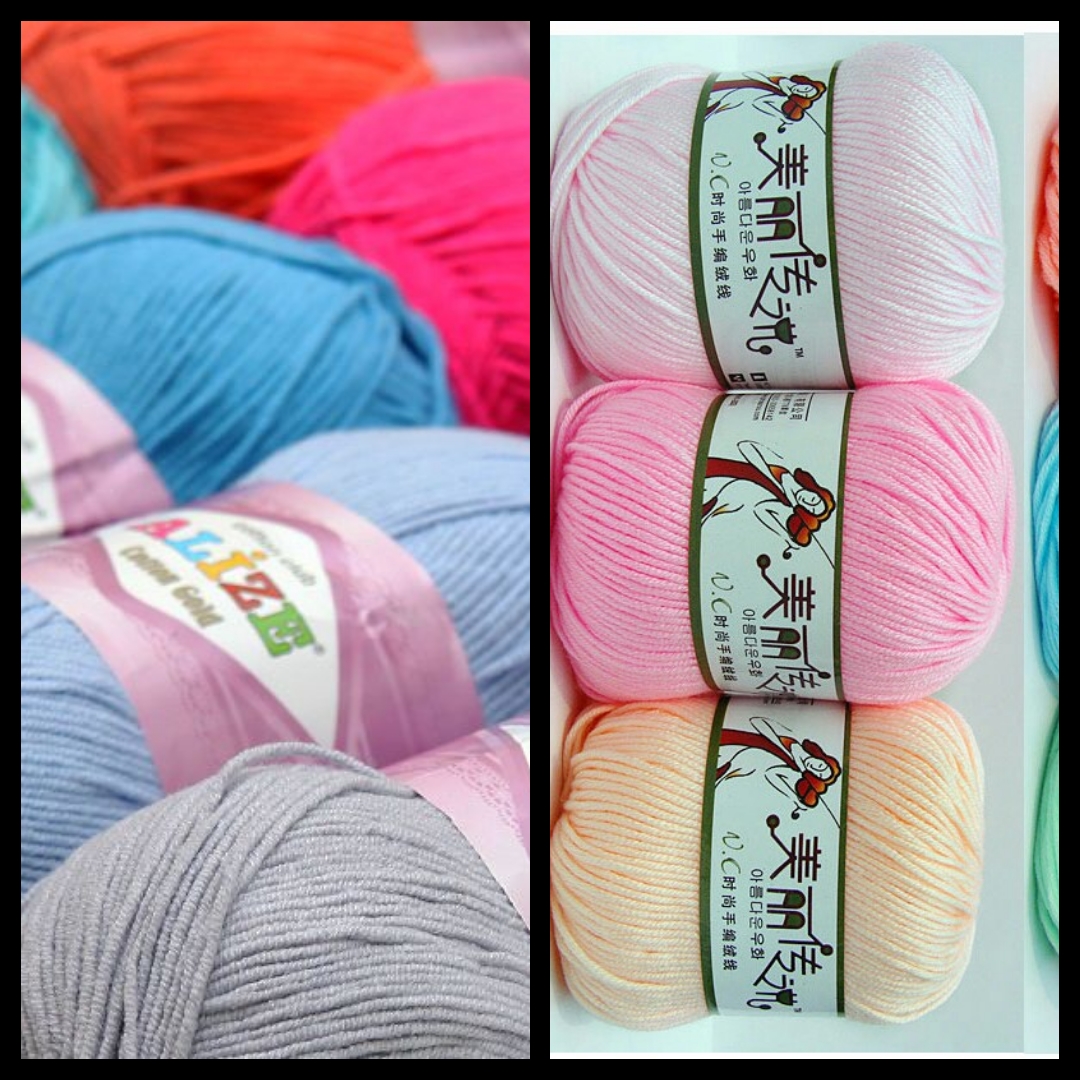
The undisputed winner of the first place, earning the best reviews from both novice craftswomen and more experienced needlewomen. Versatile - it can be used to make bags, lace boleros and beach capes, and of course pullovers and cardigans.
Advantages:
- Hypoallergenic - despite the synthetic composition, acrylic does not cause skin or respiratory allergies due to the high-tech production process;
- Strength - an acrylic canvas is resistant to stretching and deformation, even after a few years such a thing will not lose its shape;
- Color stability - the linen is not afraid of even frequent washing, it does not fade in the sun;
- A thing made of acrylic practically does not wrinkle;
- In combination with wool, acrylic acquires additional softness, drapes well;
- Various thickness of the thread - from the thinnest to the largest;
- The average price of 1 skein (100 g) will be from 50 to 180 rubles, depending on the ratio of acrylic and other components.
Disadvantages:
- Acrylic material is highly electrified, so it is better not to use such a thread in its pure form.
Polyester
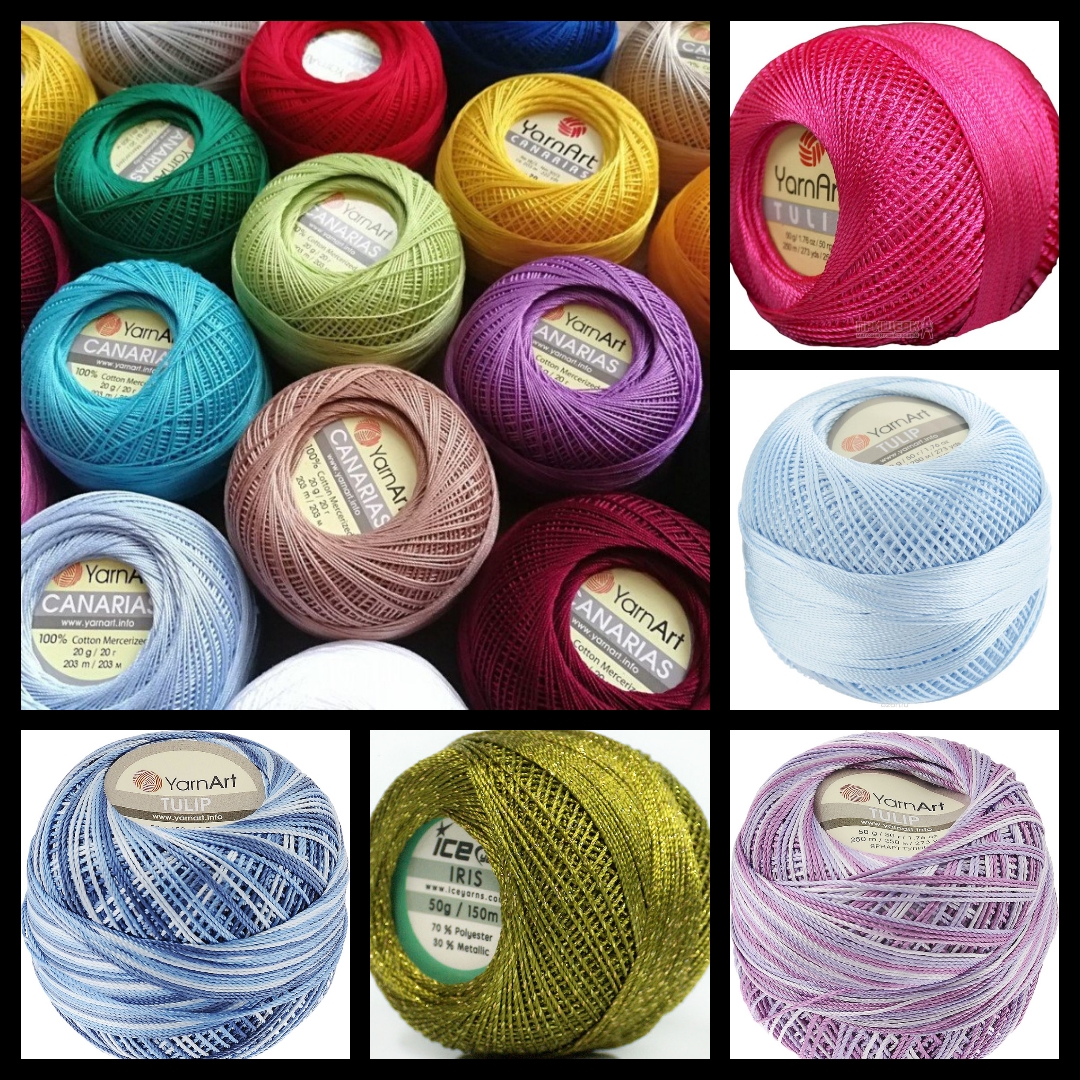
According to buyers, this synthetic material is an excellent alternative to natural wool at a more pleasant price - one skein will cost 1.5-2 times cheaper than a skein of woolen thread. In appearance, products made from this yarn are similar to woolen ones, and they heat just as well. Another name for this synthetic fiber is lavsan.
Advantages:
- Elasticity and strength - it is difficult to damage a canvas made of threads with lavsan or make a hold on it;
- Polyester fabric is elastic, drapes nicely;
- The color does not fade in the sun.
Disadvantages:
- Electrifies;
- Low hygroscopicity (ability to absorb and release moisture).
Viscose
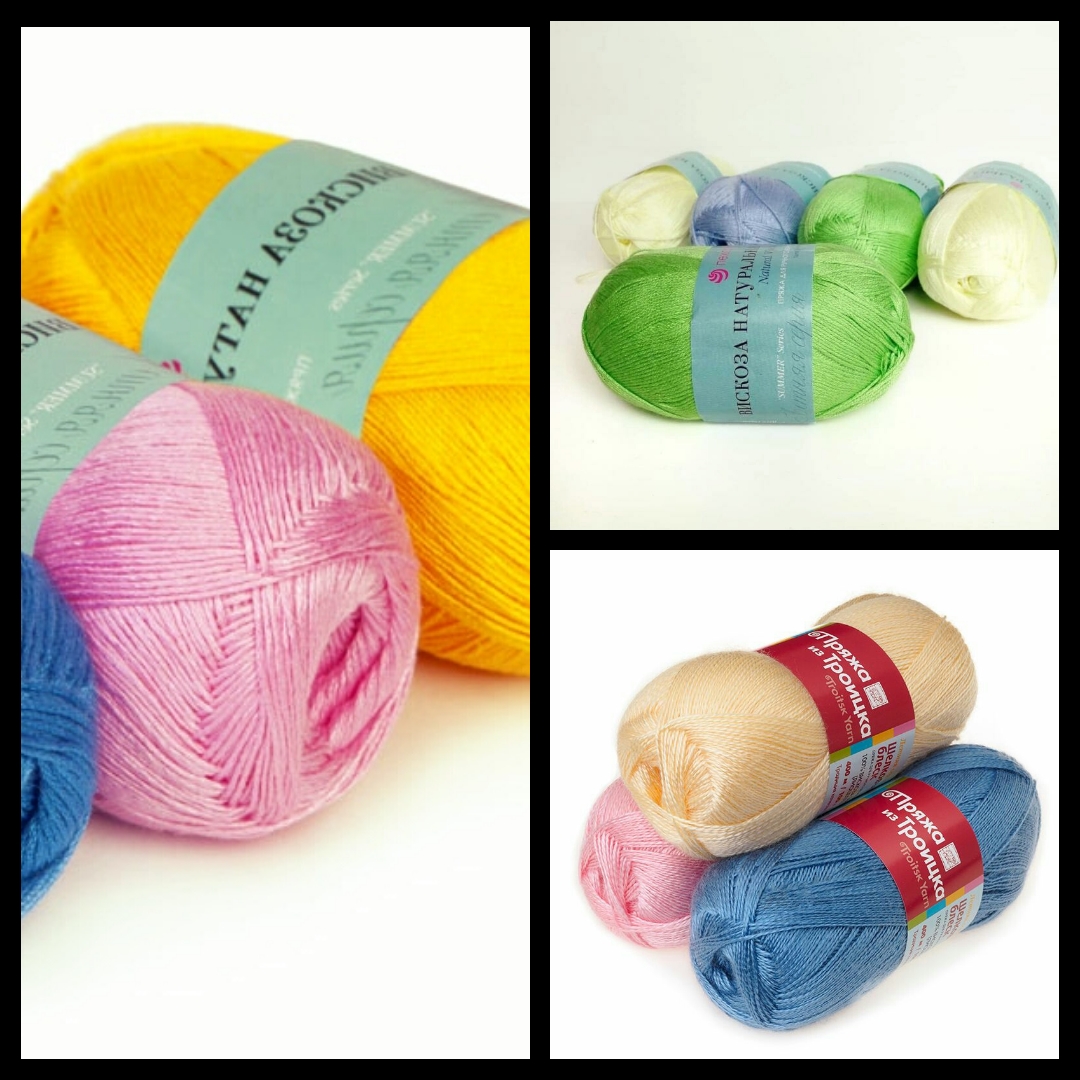
The third most popular artificial thread component. At the same time, it cannot be called synthetic, since the remains of wood after processing coniferous trees are used for its production. Quite often you can find melange threads with viscose in the composition. A viscose cardigan will look like a cashmere cardigan.
Advantages:
- Gives the canvas softness, velvety, the canvas made of it is very pleasant to the touch;
- A cloth made of threads with the addition of viscose is easier to dissolve and tie;
- Good air permeability.
Disadvantages:
- Viscose canvas wrinkles strongly;
- Fragile, requires careful handling and washing;
- Burns out in the sun.
Cotton
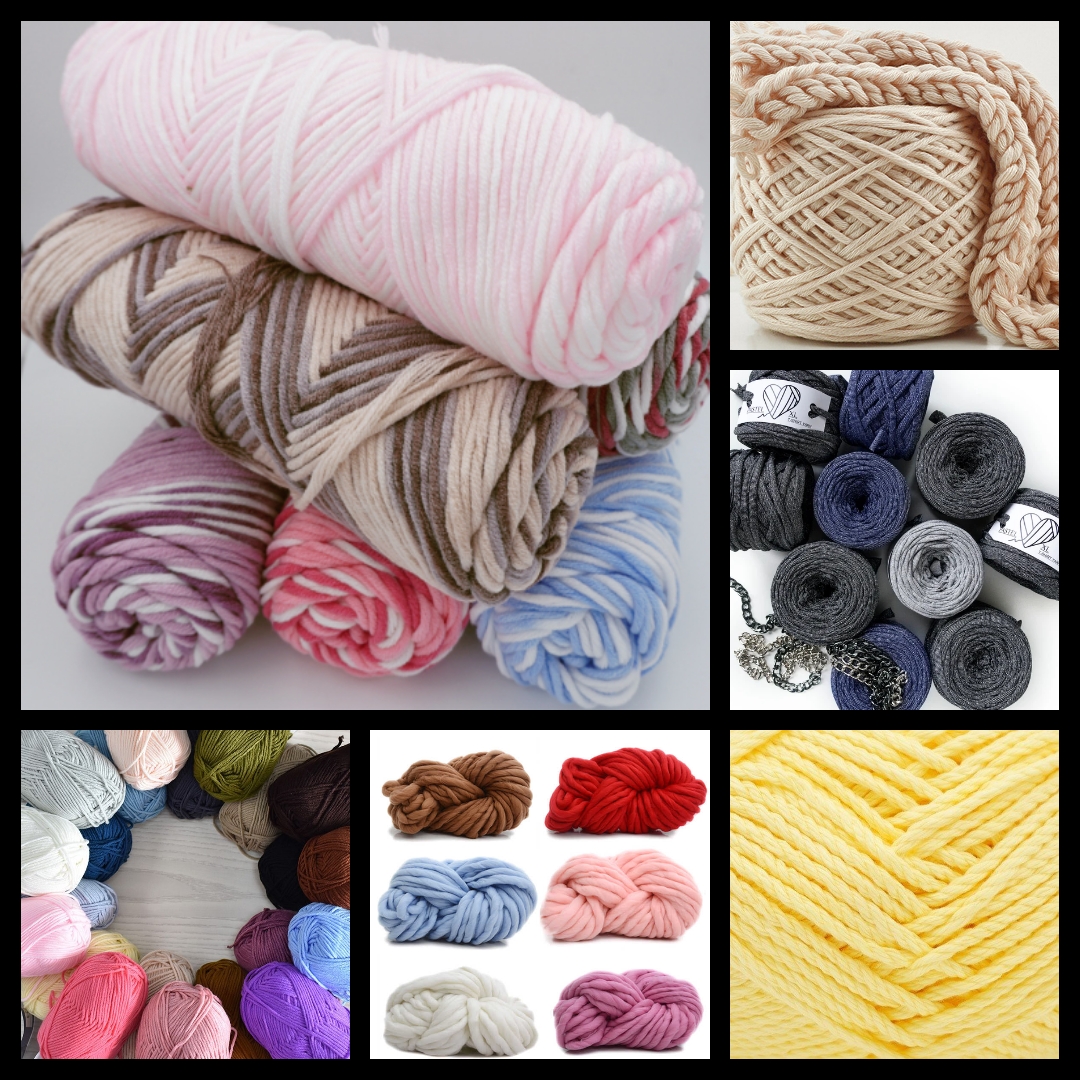
Completely natural, the range of thread thickness is huge - from the thinnest to the thickest. Cotton is easy to work with, and modern dyeing technologies provide a choice from a large color palette.
Advantages:
- Cotton cloth "breathes", hygroscopic;
- Hypoallergenic.
Disadvantages:
- Cotton fabric wrinkles a lot, so it is better to use cotton with the addition of acrylic or polyester.
Experienced needlewomen choose wool, angora, rayon, bamboo and linen.
A cotton summer cardigan of openwork knitting made of thin threads will look weightless and elegant, it can be safely added to even an evening outfit.
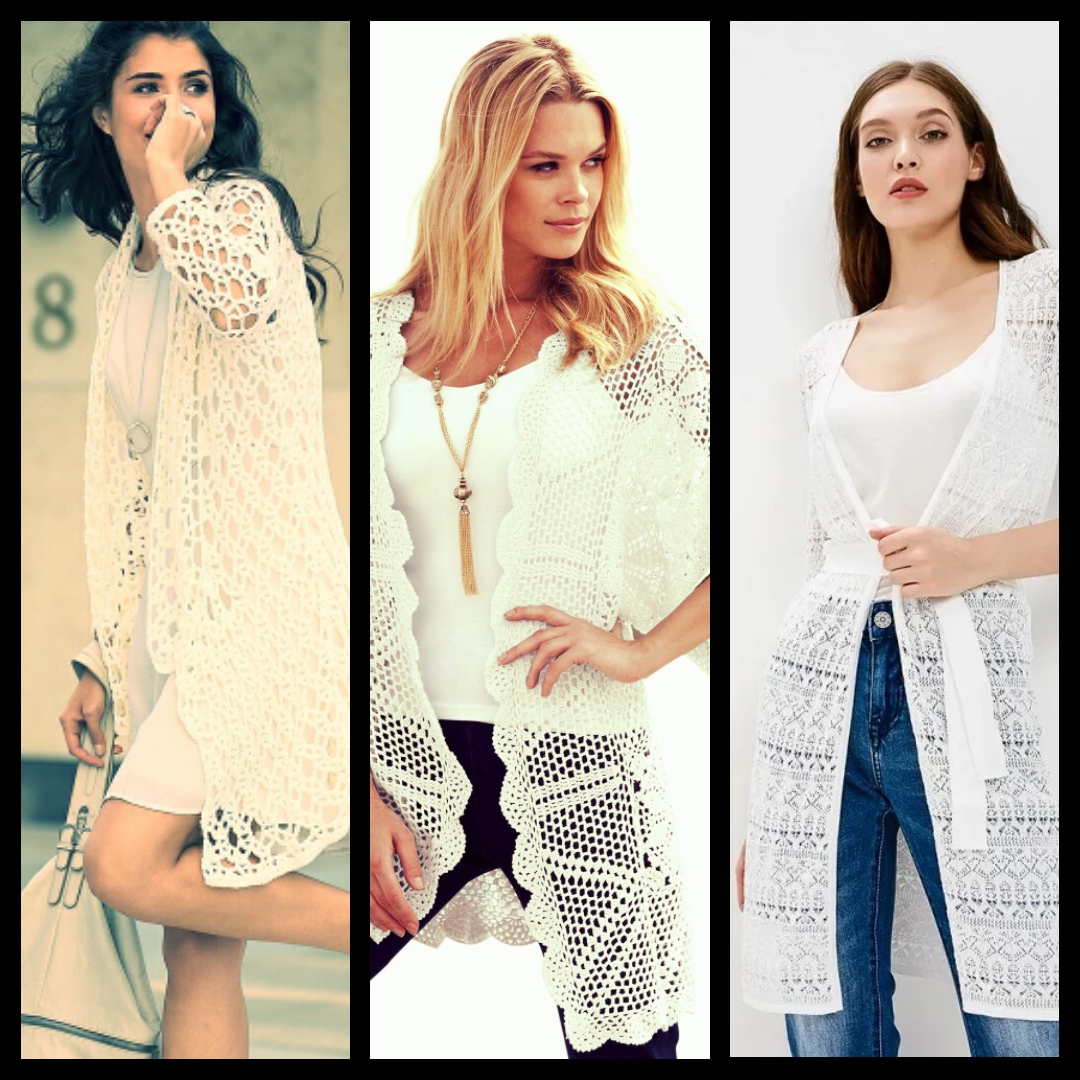
Thick cotton threads work well for a cozy, soft piece.
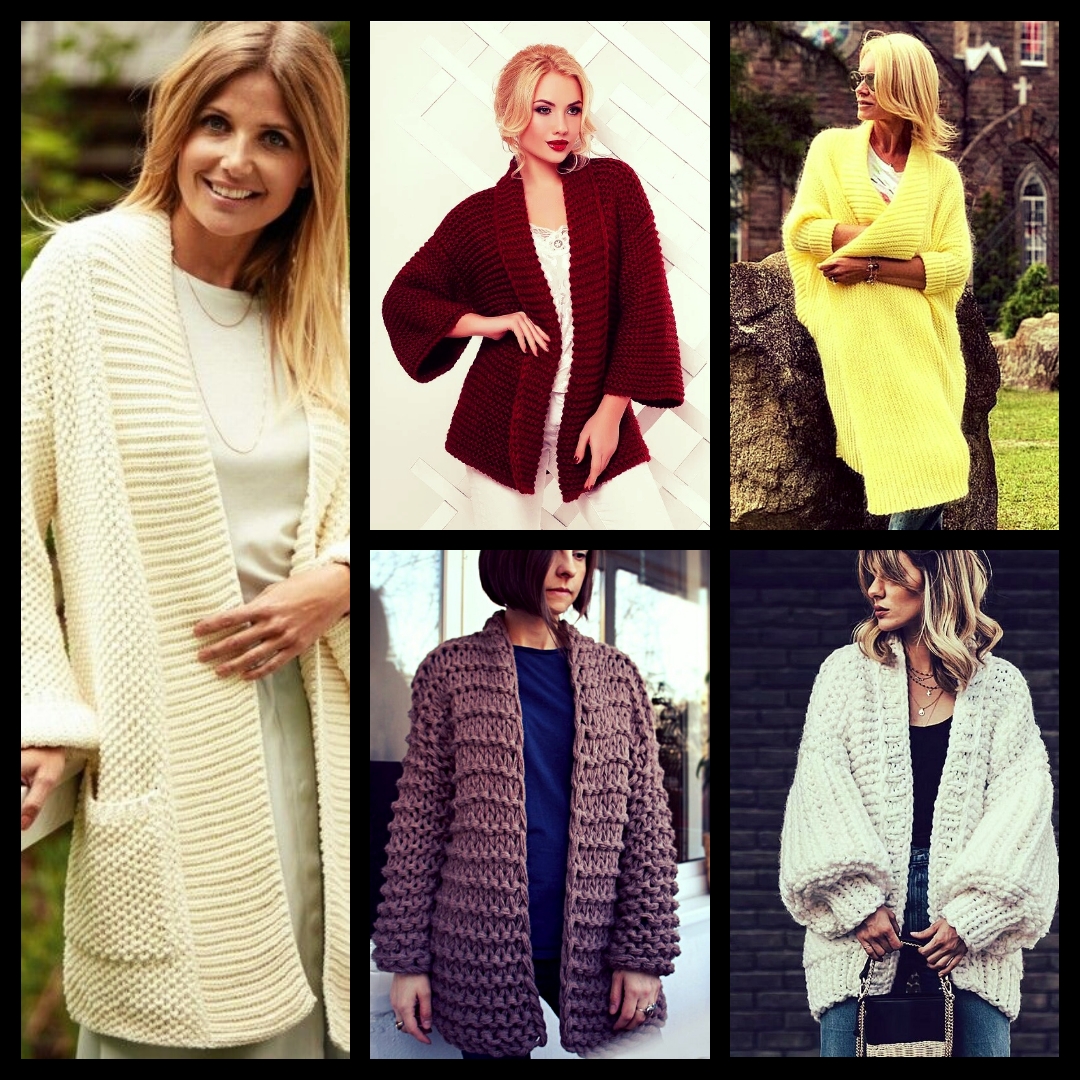
A summer cardigan made of silk with the addition of microfiber looks very stylish and expensive - provided that the craftswoman has experience with such material. The artificial silk threads glide well, the fabric is easily unraveled and tied, but the density of knitting must be strictly controlled: if the loops are too weak or uneven, the pattern will "creep" and the fabric will be uneven. It will be impossible to fix this by washing and steaming - artificial silk does not stretch, so the knitted fabric will no longer even out, remaining, so to speak, in its original form.
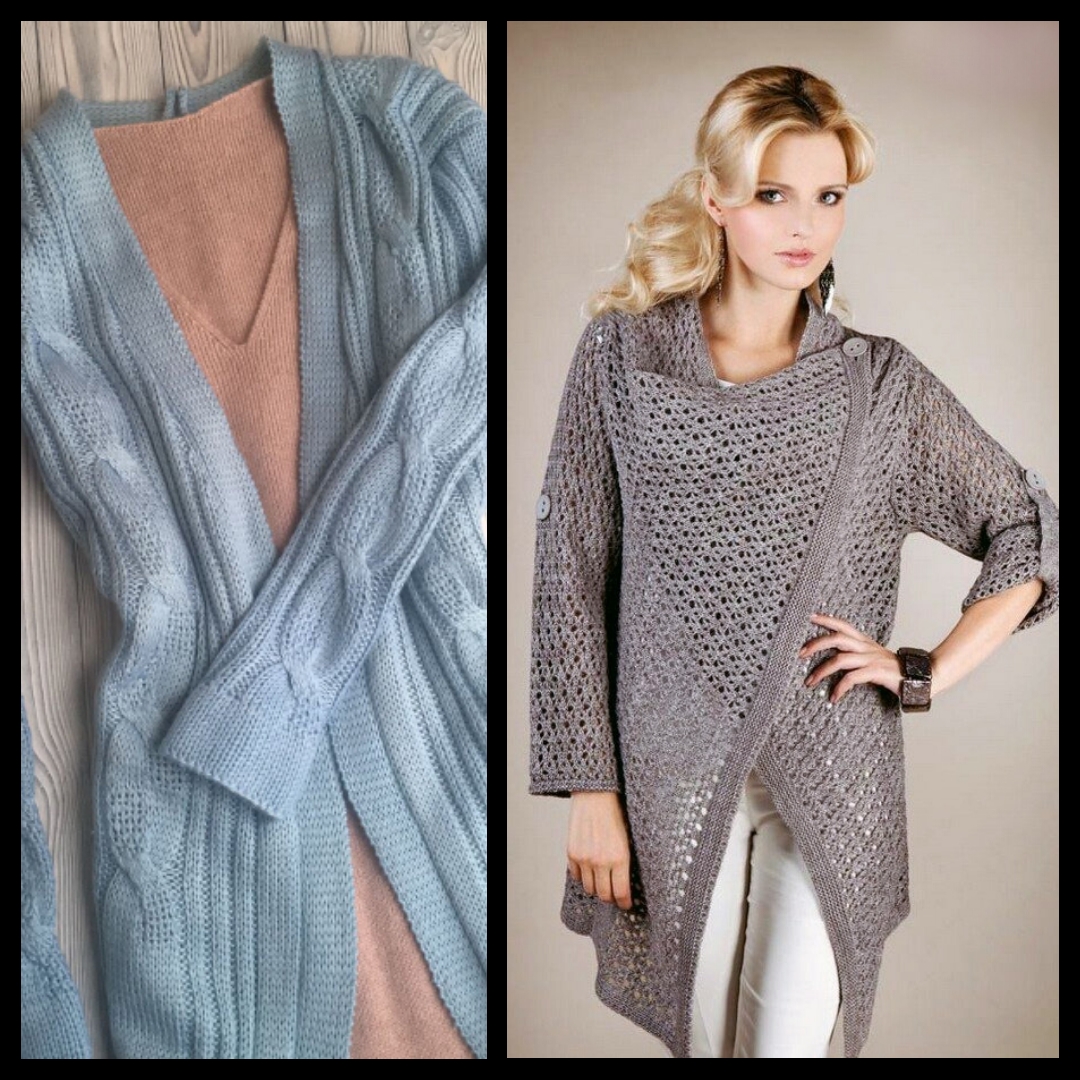
An alternative to rayon is bamboo threads. They are less capricious, the canvas of them lends itself to correction after the product is connected. In addition, there are types of bamboo threads with a small addition of artificial silk, so the product will have the same light silk tint, and it will take much less nerves and time to knit it.
Tips from needlewomen: an elongated or long wool product turns out to be quite heavy, and the material begins to stretch over time when worn and dried. Therefore, when choosing an elongated model, it is better to use threads with the addition of synthetic threads - they will give density to the fabric and will not allow it to stretch.
On the question of which company thread is better to buy: according to buyers from among experienced craftswomen, the best yarn producers are Turkish and Russian companies.The characteristics of their products meet the highest quality requirements. Of the Turkish brands, the Alize brand is in the lead - its products are of the highest quality, wear-resistant, their hypoallergenic index is one of the highest - from 90 to 95%. Among Russian manufacturers, the brands Semenovskaya Yarna and Kamtex stand out favorably - good price-quality ratio, durability.
The choice of yarn and possible knitting options is huge, it is enough to make a little effort to become the owner of a beautiful thing. And who knows: what if it is her unique style that will make a splash on the streets and initiate new fashion trends? Fashion as an art is not always the fruit of the creative efforts of couturiers and fashion designers. The most top-end images and combinations, which have remained in trend for years, are sometimes "spied" by the celestials of the fashionable Olympus on the streets, by courageous experimenters who are not afraid to be different from others. What if your handmade creation will become one of such prototypes for creating the latest fashion trends?












